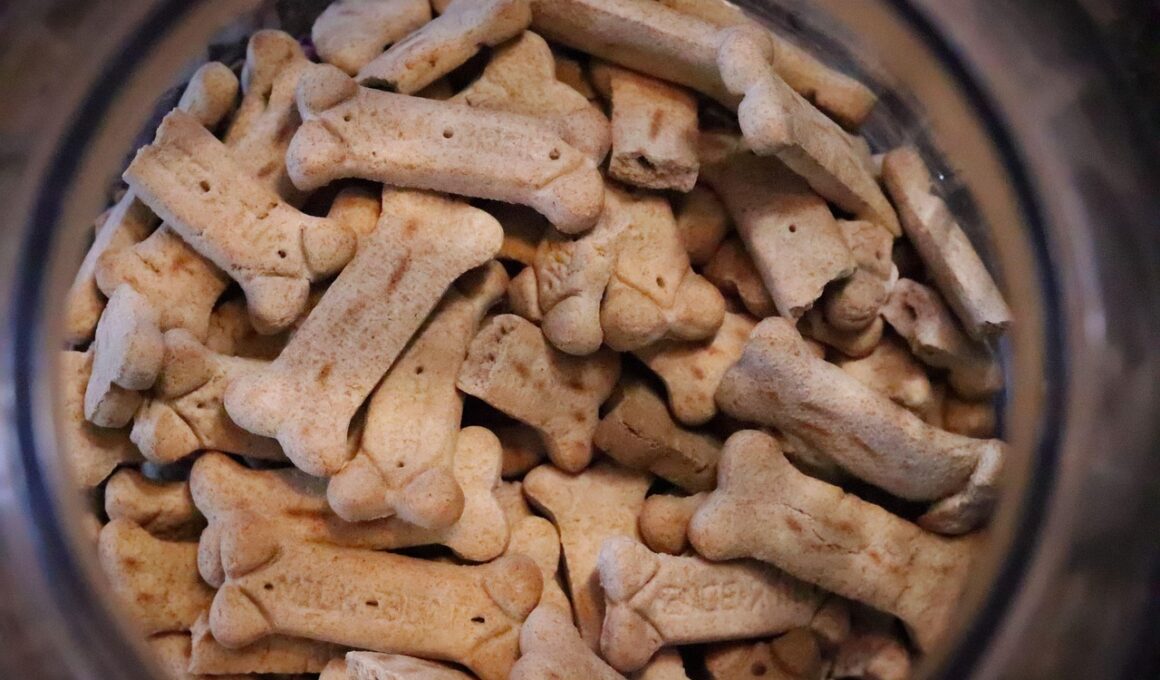Understanding Dog Food Safety: Essential Tips for Pet Owners
As pet owners, ensuring the safety of our dogs through proper food handling is crucial. Dog food safety refers to how we prepare, store, and serve dog food to minimize the risk of illness. Contaminated or improperly stored food can lead to serious health issues. It is essential to maintain hygiene in areas where dog food is handled. Always wash your hands before and after handling your dog’s food, as well as the utensils and surfaces used. Unwashed hands may transfer bacteria, and surfaces should be sanitized to avoid cross-contamination between meat and dry kibble. Familiarity with dog food labels is vital. Ingredients must be identified, and dog owners should know what their pets can and cannot eat. Look out for the ‘best by’ date to ensure freshness as expired food might cause health complications. If any dog food is found to be moldy or discolored, discard it. By prioritizing these simple safety measures, we contribute significantly to the well-being of our pets and help ensure they live long, healthy lives.
Understanding Ingredients in Dog Food
Understanding the ingredients in dog food is a fundamental aspect of ensuring food safety. Dog owners should be aware of the types of protein included in the dog’s diet. Ingredients listed first usually contain the most volume, and high-quality sources are essential for dogs. Look for specific meat sources, like chicken or beef, rather than generic terms like ‘meat meal.’ Furthermore, grains and fillers should be scrutinized carefully. Some dogs may have allergies or intolerances to common grains. Dogs typically thrive on diets rich in whole foods and less processed ingredients. Always check for preservatives and artificial additives as some might lead to adverse reactions. Additionally, when choosing between dry kibble, canned, or raw food, consider the pros and cons of each type. Dry food may have better shelf life, while canned food often provides higher moisture content. Consult with a veterinarian regarding the best food options for individual needs. Lastly, remember that transitioning foods should be done gradually to avoid digestive issues, ensuring your dog remains healthy and adjusted comfortably to a new diet.
Storing dog food correctly is vital for maintaining its safety and quality. Each type of dog food comes with specific storage instructions that should always be observed. Dry dog food should be kept in a cool, dry place, sealed tightly in an airtight container to prevent moisture and pest access. Consult your packaging for how long your dog food can be expected to remain fresh after opening. With wet food, any unused portions need to be refrigerated and consumed within a strict period, typically 5-7 days. Be attentive to these guidelines to prevent potential foodborne illnesses. When you provide home-cooked meals for your dog, it is essential to ensure all ingredients used are safe for canine consumption. Some human foods can be detrimental to dogs, like onion or chocolate. It is crucial to keep up with current knowledge about dog nutrition to avoid dangerous choices inadvertently. Additionally, dog owners should routinely check the condition of food before feeding. If any signs of spoilage, like odor or strange texture, are present, immediately discard the food to protect your dog’s health.
How to Identify Unsafe Dog Food
Identifying unsafe dog food is an essential skill for every dog owner. Addressing how to spot spoiled or contaminated food can help prevent unfortunate incidents. Some signs can indicate that a dog food product has gone bad, including unusual odors, discoloration, or an unexpected texture. If the food smells sour or rancid, it is essential to throw it away immediately. Likewise, any molds, visible insects, or foreign objects present in the food should raise alarms. Always inspect the packaging for punctures, tears, or leaks before purchasing as damaged packaging may indicate that the food has been compromised. Another aspect to consider is recalls. Stay updated on dog food recalls through websites and news outlets that specialize in pet health. It also helps to document what food you buy and when to track its stay in your home more effectively. If your dog experiences symptoms like vomiting or diarrhea after eating, consulting a veterinarian promptly is necessary. By being vigilant and educated, pet owners can significantly reduce the risk of providing unsafe food to their canine companions.
Dog food safety extends beyond just checking ingredients; it also includes understanding proper feeding practices. Feeding your dog the correct portion sizes is essential for their health and well-being. Each dog has unique dietary needs based on factors such as breed, age, and activity level. Therefore, following feeding guidelines from your dog food brand is crucial, and adjustments based on your dog’s condition should only be made under a vet’s guidance. Overfeeding can lead to obesity while underfeeding might cause malnourishment. To foster good feeding habits, consider using measuring tools instead of free feeding, which can encourage sniffing out food instead of eating it regularly. Remember, the right feeding routine implies not just how much food you provide but also when. Regular feeding times help maintain a dog’s digestive health. Furthermore, always observe how your dog responds to specific types of food and their general behavior. Changes in energy level or mood can indicate that their diet needs adjusting. Pay close attention and seek professional guidance when needed, as a happy and healthy dog starts with safe feeding practices.
Common Dog Food Myths and Facts
There exist various myths surrounding dog food that can mislead pet owners. For instance, many believe that feeding dogs bones is inherently safe, but this is largely untrue. Cooked bones can splinter and cause significant harm to a dog’s digestive tract. Conversely, certain raw bones can be safer, yet professionals urge caution and dietary knowledge. Another common myth is that grain-free diets are better for all dogs; however, research suggests that not all dogs require strictly grain-free diets. Many dogs thrive on moderate amounts of grains, particularly if they are whole grains with additional benefits. Also, some users claim that raw diets prevent foodborne illnesses, which is a dangerous misconception since raw diets can also carry pathogens. Understanding facts versus myths can help owners make informed decisions about their dog’s nutrition. When considering any new trend, consulting a veterinarian is the best approach to maintain your dog’s health. Proper knowledge prevents damage and contributes to a sustainable and beneficial diet that keeps your dog energetic and happy. Be wary and research thoroughly before making food decisions that influence your dog’s health.
Engaging with your veterinarian is crucial for ensuring your dog’s food safety protocols remain strong. Regular check-ups allow you to evaluate the effectiveness of current feeding practices and receive tailored recommendations. By reviewing your dog’s diet together, you can discuss their conformance with health guidelines, dietary updates, or trends in dog nutrition that may benefit them. Your veterinarian may suggest periodic blood tests or examinations to track nutrient levels and general health. They can also alert you to any food sensitivities or allergies your dog may develop over time. Make consultation a habit whenever you’re considering significant dietary changes to avoid adverse reactions. Remember that personal experiences or hearsay should not replace professional advice; every dog has individual dietary needs, which also change as they age. Finding safe and healthy foods tailored specifically to your dog may take time and effort, but your commitment will certainly pay off. By keeping an ongoing dialogue with your vet and continuously educating yourself on dog food safety, you establish a healthy lifestyle for your beloved pet. This careful approach ensures their well-being and enriches the pet-owner bond.


